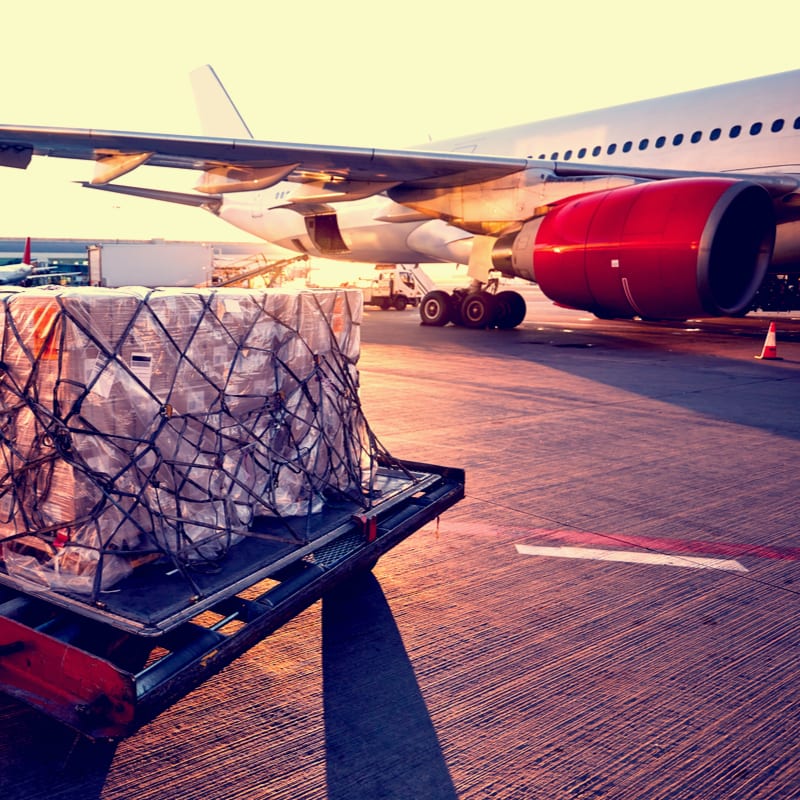
Supply chain managers constantly juggle tight deadlines and strict budgets. But what if a silent profit killer lurked within their operations, draining resources without them even realizing it? Inefficient inbound logistics, often overlooked, can significantly impact a company's bottom line through hidden costs and wasted resources.
The Hidden Costs of Inefficient Inbound Freight
While the direct costs of shipping are easily quantifiable, inefficient inbound freight processes often hide a multitude of expenses that quietly erode your bottom line. These "silent profit killers" can be categorized into two main groups: direct and indirect costs. Failing to address these can significantly impact your company's financial health and competitiveness.
Direct Costs
Direct costs are the most obvious expenses associated with inbound freight, but even here, inefficiencies can lead to unnecessary spending.
Excessive Transportation Fees
Choosing the cheapest carrier might seem like a smart move, but it can backfire if that carrier is unreliable. Late deliveries can cause production downtime, forcing expensive, expedited shipments to meet deadlines. Similarly, failing to optimize routes can lead to longer transit times and higher fuel costs.
For example, a company might opt for a carrier quoting the lowest price per shipment. However, if this carrier frequently misses delivery windows, the resulting production delays and expedited shipping costs will far outweigh any initial savings.
Demurrage and Detention Charges
Efficient container use is crucial in the fast-paced world of freight shipping. When containers aren't loaded or unloaded promptly, businesses face demurrage and detention charges. Demurrage applies to containers dwelling within a terminal or port beyond the allowed free time, while detention covers holding the carrier's equipment outside the port, essentially an overstay fee for using their container. These charges, often overlooked, can significantly inflate your shipping costs.
Think of it like a hotel stay – you're allotted a certain timeframe (free time) for checking in (loading) and checking out (unloading). Exceeding this timeframe can incur extra charges, much like a late checkout fee. Studies report these charges averaging $150-$200 per container per day globally in 2023. With multiple containers or extended delays, these seemingly small fees can quickly snowball into a substantial expense, impacting your overall profitability. Efficient yard management, streamlined loading/unloading processes, and proactive communication with carriers are vital to avoid these costly charges.
Increased Inventory Carrying Costs
Inefficient receiving and warehousing processes contribute to higher inventory carrying costs. Delays in processing inbound shipments can lead to overstocking, requiring more storage space and increasing the risk of obsolescence. Furthermore, these delays can hinder timely inspections, potentially leading to missed opportunities to identify damage and file claims with carriers.
For instance, if a furniture retailer's warehouse is slow to process incoming shipments, they might end up ordering more stock than necessary due to a lack of visibility on available inventory. This overstocking leads to higher storage costs and potential losses from damaged or outdated furniture.
Indirect Costs
Indirect costs are less tangible but equally damaging to your profitability.
Loss of Productivity
Freight issues demand time and attention. Supply chain managers often find themselves chasing down shipments, resolving delivery discrepancies, and correcting invoices, diverting their focus from core responsibilities like strategic sourcing and negotiation.
Instead of analyzing supplier performance or identifying cost-saving opportunities, valuable employee time is wasted on firefighting logistics issues.
Damaged Goods and Increased Returns
Poor handling during transit or inadequate packaging can result in damaged goods. This increases return rates, processing costs, and potentially lost sales. In fact, the average cost of processing a return is $15-$30, plus the cost of return freight, which can vary significantly depending on the size and weight of the goods and the distance they need to be transported. Multiply this by a high volume of returns due to shipping damage, and the financial impact becomes significant.
Strained Supplier Relationships
Inconsistent communication and unreliable delivery schedules can strain relationships with your suppliers. Late deliveries disrupt production schedules, leading to missed deadlines and dissatisfied customers, potentially damaging valuable partnerships.
Imagine a manufacturer relying on a specific component for their production line. Consistent delays from the supplier can halt production, leading to missed delivery deadlines, frustrated customers, and, ultimately, a damaged reputation for both the manufacturer and the supplier.
The Illusion of "Free" Freight
The allure of "free freight" can be tempting. However, this seemingly attractive offer is often a clever illusion that masks hidden costs. Remember, there's no such thing as a free lunch, and freight is no exception.
Let's be clear: there's no such thing as truly "free" freight. The cost of transportation is always factored into the equation, even if it's not explicitly itemized on the invoice. Suppliers offering "free freight" simply bake those costs into the overall product price, potentially inflating it and reducing your negotiating power.
The Power of Volume and Control
Controlling your inbound freight offers a strategic advantage that extends beyond individual transactions. By managing your inbound logistics, you increase your overall shipping volume, which strengthens your negotiating leverage for both inbound and outbound freight.
Consider this example:
-
Company A spends $100,000 per year on outbound freight and $60,000 per year on inbound freight, totaling $160,000 in annual freight spend.
-
Company B spends the same $100,000 on outbound freight but takes the "easy button" approach on inbound, letting vendors handle it.
Clearly, Company A, with its $160,000 freight spend, wields greater negotiating power with carriers than Company B, limited to a $100,000 spend. This translates to better rates, improved service, and potentially greater flexibility.
The Ripple Effect of Inbound Control
Taking control of inbound freight creates a ripple effect of benefits throughout the supply chain. Think of a large automotive manufacturer. They not only manage their own inbound freight but also the shipments from their direct suppliers (Tier 1) into their plants. Furthermore, they extend this control to manage the freight from their suppliers' suppliers (Tier 2) into Tier 1, and so on. This approach creates a cascading effect, compounding their freight volume and amplifying their negotiating leverage.
This level of control also provides early visibility into potential disruptions. By managing the flow of goods from multiple tiers of suppliers, the manufacturer gains advance notice of potential delays or issues that could impact production. This proactive approach allows for timely adjustments and mitigates the risk of costly disruptions down the line.
By recognizing the illusion of "free freight" and embracing a proactive approach to inbound logistics, supply chain managers can unlock significant cost savings, enhance their negotiating power, and gain greater control over their entire supply chain.
Unlocking Financial Gains Through Optimized Inbound Freight
While juggling numerous responsibilities, supply chain managers often overlook the significant financial impact of their inbound freight operations. However, proactively managing this critical aspect of the supply chain can unlock substantial cost savings and contribute directly to the company's bottom line.
Here are some cost-reduction strategies to help you maintain your budget while optimizing operations:
Carrier Negotiation and Selection
Don't simply accept the first quote you receive. Leverage your volume and shipping patterns to negotiate competitive rates with carriers. Consider factors beyond price, such as reliability, on-time performance, and service offerings.
By consolidating shipments or committing to a certain volume, you can secure lower rates and reduce transportation costs.
Route Optimization
Efficient routing minimizes mileage, fuel consumption, and transit times, leading to lower transportation costs. Utilize technology and data analysis to identify the most cost-effective routes for your shipments.
Implementing a TMS with route optimization capabilities can identify the most efficient routes, considering factors like distance, traffic, and delivery windows.
Inventory Management
Streamlining your receiving and warehousing processes minimizes inventory holding costs. Efficiently processing inbound shipments reduces storage time, minimizes the risk of obsolescence, and frees up valuable warehouse space.
Implementing a just-in-time inventory system can reduce inventory levels and associated carrying costs while improving overall efficiency.
Claims Management
Establish a proactive claims management process to recover costs associated with damaged goods or lost shipments. Proper documentation and timely filing can significantly reduce losses and protect your financial interests.
Implementing a standardized process for documenting damage, filing claims, and tracking resolutions can ensure timely recovery of costs and prevent future issues.
Find the Right Solution
Partnering with a third-party logistics provider (3PL) or utilizing freight tech like a transportation management system (TMS) allows you to reap the rewards of optimized inbound freight without significant additional effort. These solutions provide expertise and technology to streamline your operations, reduce costs, and improve efficiency, allowing you to focus on your core competencies.
Ready to transform your inbound freight operations from a cost center to a source of financial advantage? Customodal empowers supply chain managers with the experts, tools, and insights needed to optimize their inbound logistics. Our platform provides real-time visibility, streamlines communication, and automates key processes, allowing you to take control of your freight and unlock significant cost savings.



.jpg)

